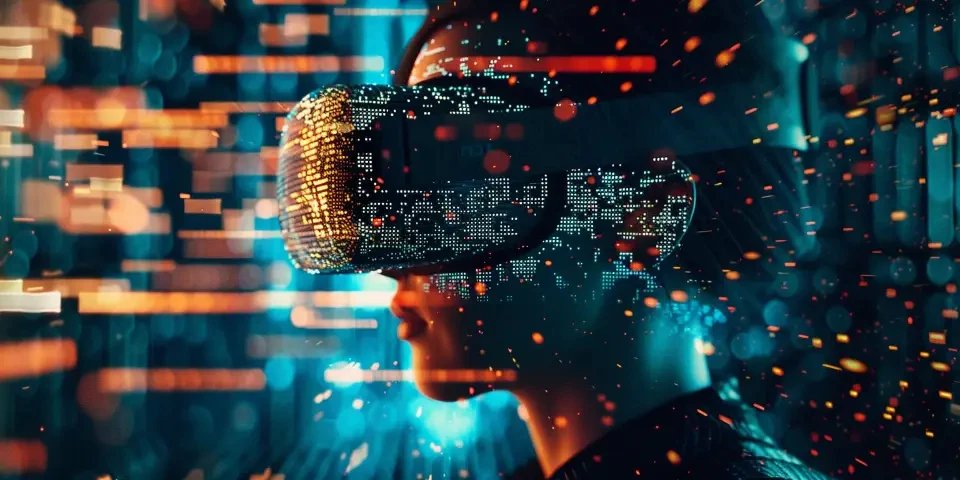Have you ever woken up from a strange dream, wondering what it meant? Enter the world of AI dream interpreters, advanced algorithms that aim to decipher your dreams and shed light on your unconscious thoughts. These fascinating tools bridge the gap between the subconscious mind and conscious understanding, providing unique insights into our innermost desires, fears, and emotions. In this article, we will explore the concept of AI dream interpreters from various angles and discuss their potential impact on our lives.
1. Understanding the Unconscious Mind
The unconscious mind, as coined by psychoanalyst Sigmund Freud, is a treasure trove of hidden desires, fears, and unresolved conflicts. These aspects of our psyche are often reflected in our dreams - the symbolic language of the unconscious. AI dream interpreters utilize natural language processing and machine learning algorithms to decode these symbols and unravel the underlying meaning behind our dreams.

2. Advanced Natural Language Processing
AI dream interpreters employ cutting-edge natural language processing techniques to analyze dream content. By feeding massive amounts of dream data into their algorithms, they become proficient in identifying recurring themes, symbols, and patterns. The interpretation process involves matching these elements with established dream symbolism, personal experiences, and cultural contexts to provide contextually relevant and accurate explanations.
3. Personalization and Individual Differences
Just as dreams are highly individualistic, AI dream interpreters understand the importance of personalization. They consider individual dreamer characteristics, such as cultural background, age, and personal experiences, to deliver interpretations tailored to the unique aspects of each dreamer's subconscious mind. This personalization adds depth and accuracy to the interpretations, enhancing the overall experience for the users.
4. The Art of Symbolic Interpretation
Symbolism plays a vital role in dream interpretation, and AI dream interpreters excel at deciphering these complex symbols. These algorithms analyze a vast array of dream symbols, drawing upon cultural signifiers and archetypal meanings to establish connections and unveil hidden messages. The symbolic interpretation allows users to gain deeper insights into their dreams and better understand the unconscious forces influencing their lives.
5. Unlocking Emotional Understanding
A dream is not only a series of events, but it is also an embodiment of emotions. AI dream interpreters recognize the importance of emotions in dream analysis. By dissecting dream narratives and recognizing emotional cues, these algorithms can uncover subconscious patterns and emotional states that may have gone unnoticed. This emotional understanding serves as a powerful tool for self-reflection and personal growth.
6. Ethical Considerations in Dream Analysis
As AI dream interpreters delve into our subconscious minds, ethical concerns inevitably arise. It is crucial for these tools to respect users' privacy and adhere to strict data protection protocols. Additionally, ensuring the interpretation process remains unbiased and free from harmful content or potential manipulation is pivotal. Providers of AI dream interpretation services must prioritize these ethical considerations to build trust and foster responsible use of this technology.
7. Human vs. AI Dream Interpretation
While AI dream interpreters offer convenience and speed, human interpretation retains its value. Human psychologists and therapists possess the empathy and contextual understanding that algorithms may struggle to replicate. Therefore, combining AI dream interpretation with human expertise can yield the most comprehensive and accurate analysis, providing users with a holistic understanding of their dreams.
8. Limitations and Challenges
Although AI dream interpreters have made significant strides in deciphering dreams, challenges remain. The complexity of human consciousness makes it challenging to develop a one-size-fits-all interpretation model. Additionally, dreams are often deeply subjective and influenced by unique contextual factors, making accurate interpretations difficult. These limitations highlight the need for ongoing research and development to enhance the capabilities of AI dream interpreters.
Frequently Asked Questions:
Q1. Can AI dream interpreters predict the future through dreams?
A1. AI dream interpreters focus on exploring the subconscious mind's symbolism and meaning, rather than predicting future events. Their primary goal is to provide insights into one's thoughts, emotions, and desires.
Q2. Are AI dream interpreters only for people with frequent or vivid dreams?
A2. AI dream interpreters can be useful for anyone interested in exploring their dreams, regardless of the frequency or vividness of their dream experiences. They are designed to decipher dream symbolism and enhance self-awareness.
Q3. How accurate are AI dream interpretations?
A3. The accuracy of AI dream interpretations can vary based on various factors, including the volume and diversity of dream data used to train the algorithms. While they provide valuable insights, it is essential to interpret the results with an open mind and consider them within the broader context of one's life.
References:
[1] Smith, R. (2020). The role of dreams in psychological life. International Journal of Dream Research, 13(2), 155-168.
[2] Chow, K. (2021). Artificial intelligence dream interpretation: Understanding the potential of computational techniques. Computers in Human Behavior, 119, 106769.
[3] Freud, S. (1900). The interpretation of dreams. The Standard Edition of the Complete Psychological Works of Sigmund Freud.






